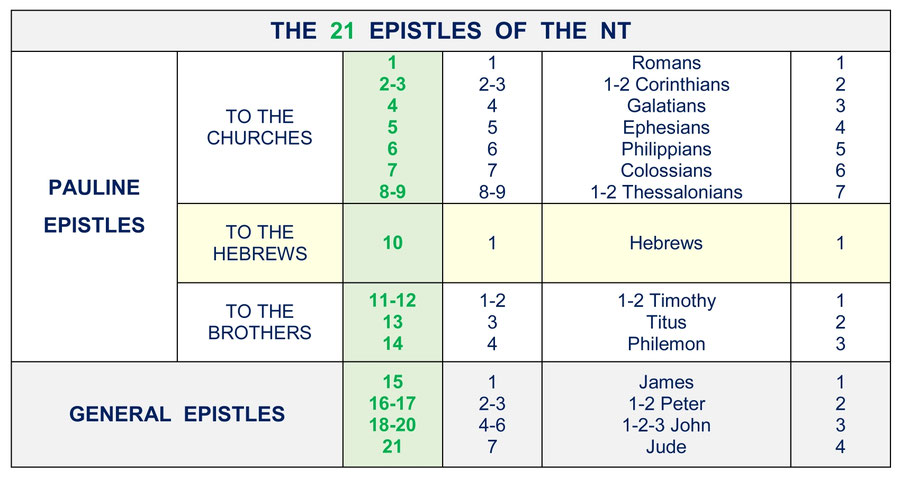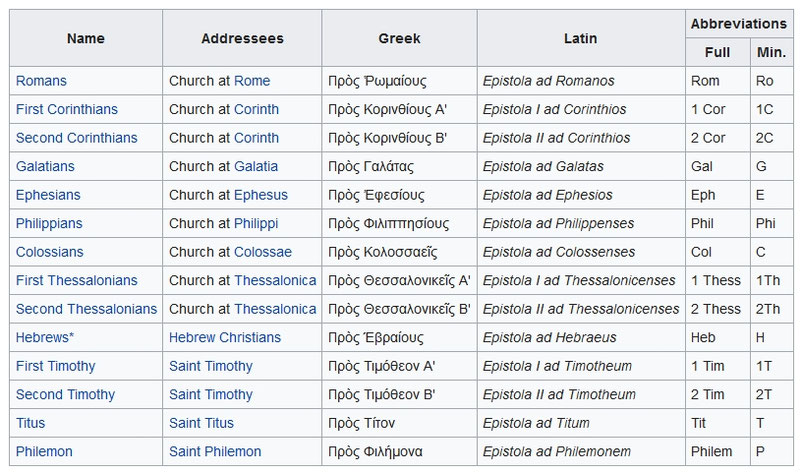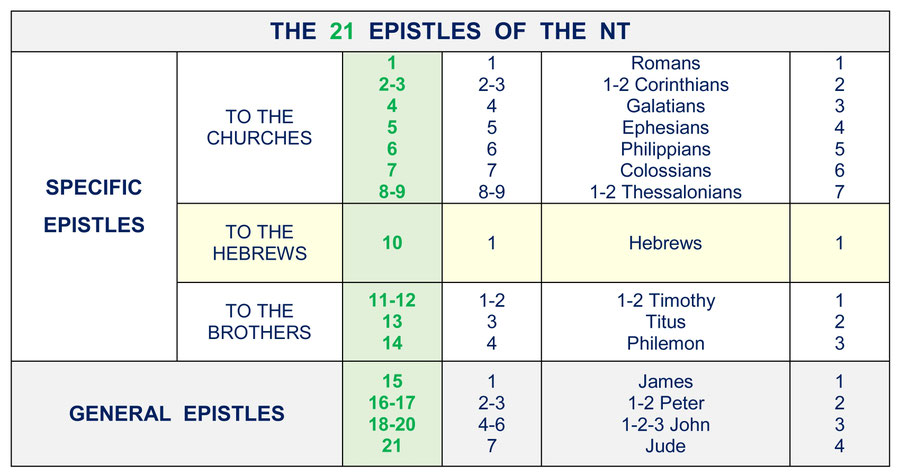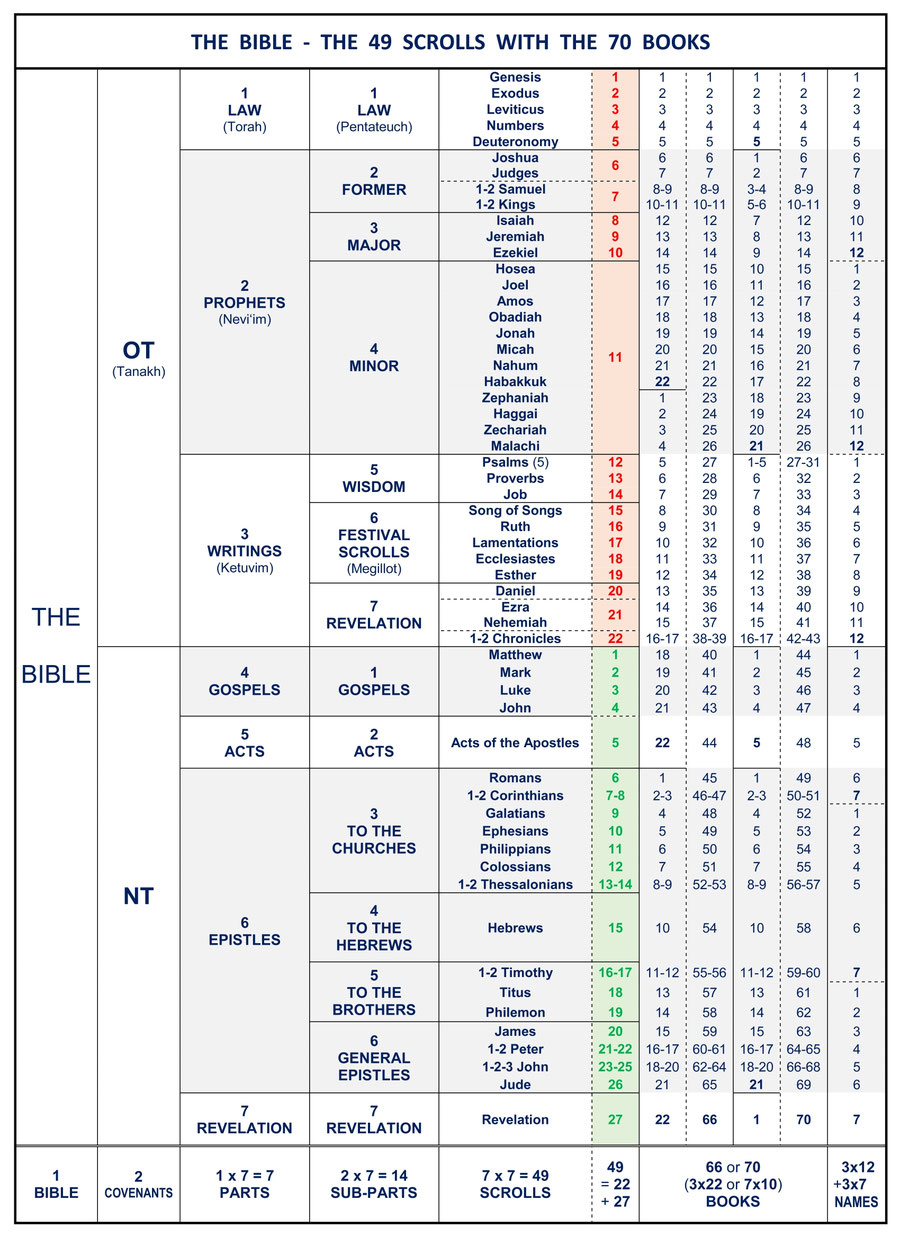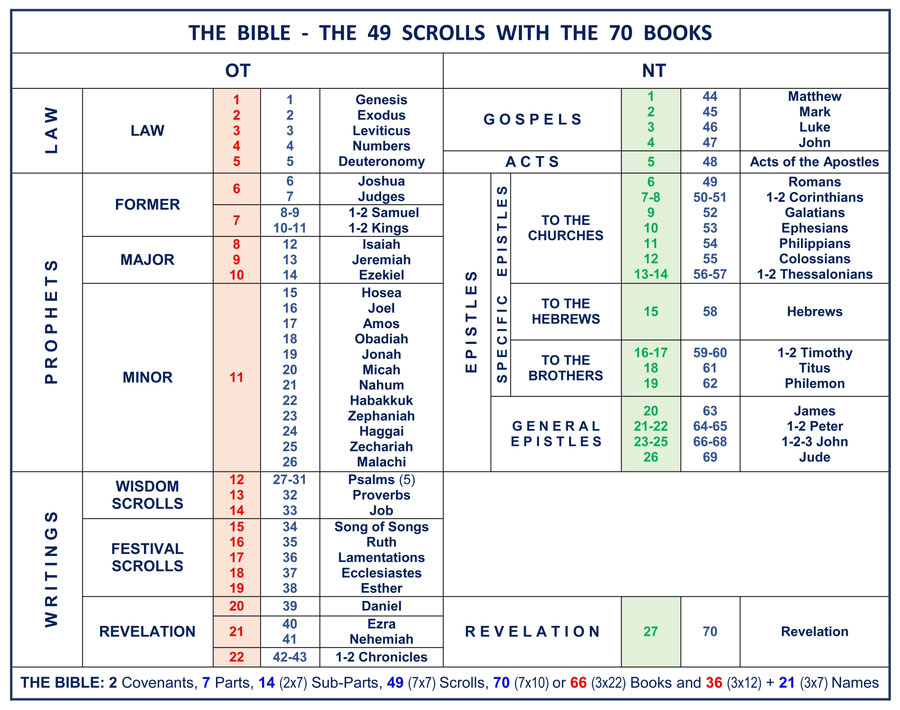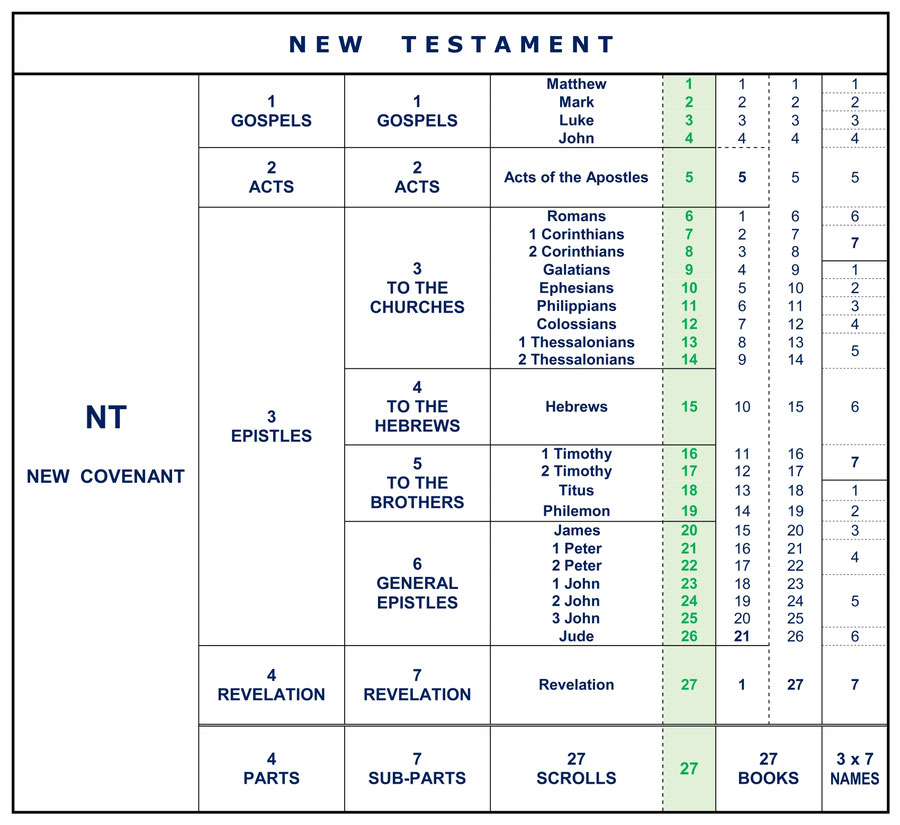Was the Epistle to the Hebrews written by Paul?
In various theological writings, Paul is questioned as the author of the letter (=epistle) to the Hebrews. Why do some people try so hard to prove that this letter was not written by him? This usually has the same purpose again and again, namely to sow doubt on the entire Word of God and question everything. Paul is a hot topic for many Christians, especially for feminists, for his instructions that the wife should submit to her husband, as well as in the church. They do not like that at all. That's not how they imagine a god. Some Christians even want to completely abolish all the Pauline letters from the Bible and call them merely a "Christian Talmud", that is, a collection of theological writings that do not belong to the Bible. Some Protestant and free churches follow this path and say "well, you do not have to take everything so literally, what Paul says". These are all dramatic statements that aim to lead the Church of God away from the Word of the Bible, and to follow the spirit of the times. For if anyone says that the Pauline Epistles do not belong to the Bible, then the 7 General Epistles are pointless, for even Peter confirms “ALL” of Paul's Epistles (2 Peter 3:14-18). Whoever argues in such a way must also abolish the book of Acts, for in it the journeys of Paul have taken a very broad place. Anyone who wants to doubt and remove some of the 27 New Testament books creates a spiritual chaos within the Christian church, because it promotes controversy and discussions without end, since everyone could now choose which books (including the apocrypha) in the New Testament (NT) would like and which he does not want to have in the Bible.
Even Martin Luther (*1483, †1546) had a problem with the Letter to the Hebrews, as well as the two Epistles of James and Jude, because he could not properly classify some passages. In his opinion, these three writings were not supposed to adequately appreciate Christ and he put these 3 "unloved" books at the end of the NT. However, it is exactly the opposite, because the Letter to the Hebrews even declares Jesus Christ (=the Word or Yahweh) even as the creator of the earth and of the people (Hebr 1) and describes his broad work already at the time of the Old Testament (OT), and not just from the New Testament (NT). The letter to the Hebrews has a tremendous spiritual content that only those who are familiar with the OT and understand the spiritual dimension behind the letter can understand. Luther simply put these so-called "Jewish writings" at the end of the NT. But the Letter to the Hebrews belongs to the 10th place, that is directly after the 9 letters to the 7 churches, that is, to the center of the 21 (3x7) Letters of the NT. Again: The Epistle to the Hebrews does not belong to the end, but into the middle of the 21 Letters of the NT (more info about the correct order):
The Epistle to the Hebrews was written by Paul
There have been many Christians since the dawn of the Christian Church until our time, who believe that Paul was the author of the Epistle (Letter) to the Hebrews. There are not just theories, but clear facts:
1. God wants security and no guesses. If the Epistle to the Hebrews had not been written by Paul, then there is no name that could be named. Thus, we would have to say "a book by a mysterious unknown writer". Everything else would only be guesses, as even Mr. Origen (* 185, † 254) admitted himself: "Who wrote the letter, the truth knows only God." If it were not Paul, but a new person who had not yet appeared as a writer, then this new person should have been called by name. And his position within the church should have been explained. It would have to be ensured that this man really has the authority to write such spiritual content to the Hebrews. Paul, on the other hand, had all the authority for decades and his word counted in all Christian churches. He was personally called by Jesus Christ (Acts 9). All believers knew about his change and how important he was in the church. Even Peter has confirmed the importance of the letters of Paul (2 Peter 3:14-18). The fact that no one was mentioned explicitly by name, however, suggests Paul as the author of the Epistle to the Hebrews, of whom numerous other letters in all churches were not only circulating but also recognized and accepted. It is possible that the name of Paul was deliberately not mentioned because he was a former renegade Pharisee who was persecuted and rejected by the Jewish (Hebrew) priesthood.
2. Paul was an expert with a great deal of knowledge about the Old Testament. There were several fishermen among the disciples of Jesus (Peter, John, Andrew, James) who had spent much of their time fishing since childhood. Matthew was a customs officer (tax-taker), who initially was mainly interested in the money and not the Torah. Nor did the pagans converted to Christianity consider writing the Epistle to the Hebrews, for such a great knowledge of the whole of the OT, and especially of its spiritual significance, presupposes years of study. Moreover, at the time it was much harder to read the very precious OT scrolls. But Paul, unlike anyone else, was a Pharisee since his youth, taught by his family since childhood in the law and the entire OT. He had access to the scrolls of the Bible. He writes of himself: "I am a Pharisee, descended from Pharisees" (Acts 23:6). He spoke to the Jews in Hebrew "I am a Jew... I studied under Gamaliel and was thoroughly trained in the law of our ancestors" (Acts 22:2-5). Gamaliel was a Jewish patriarch and the most important figure of rabbinic Judaism around the middle of the first century AD. He was the personal teacher of Paul. Not only that, for Paul was one who was not independent, but active "on the authority of the chief priests" (Acts 26:4-12; 22:5). Unlike many other brothers, Paul not only knew the Christian, but also the OT way of thinking since his earliest youth. Many other brethren were out of the question to make such a letter to the Hebrews, as they did not have such in-depth knowledge. Wikipedia gives more information: “In the Christian tradition, Gamaliel is recognized as a Pharisee doctor of Jewish Law. The Acts of the Apostles chapter 5 speaks of Gamaliel as a man, held in great esteem by all Jews, who spoke to not condemn the apostles of Jesus in Acts 5:34 to death, and as the Jewish law teacher of Paul the Apostle in Acts 22:3.”
How is it today? It has not changed much. Even today many Christians can not understand the Letter to the Hebrews. And why? Simply because they lack the basis of the OT. That's why they do not understand it and see that Paul writes quite differently ("more complicated") than before. But those who know the OT (Hebrews and Christians) understand this letter and it's not complicated at all. Now, if you read the entire NT and ask yourself, who would be the most likely to write a letter to the Hebrews, then the choice is very small and only Paul can be considered. His great speeches in the book of Acts testify to his extraordinary fluency and his great knowledge.
3. Paul thought of the whole Christian Church, not just of the Gentile Christians. Paul wrote 4 very personal letters to 3 co-workers / brothers from the church (Timothy, Titus, Philemon). He has also published 9 very personal letters to the 7 churches in the Diaspora (Romans, Corinthians, Galatians, Ephesians, Philippians, Colossians, Thessalonians). Each church had its specific needs and problems. It was therefore specifically addressed. The words were mostly addressed to Gentile Christians. Therefore it was so important not to forget his own people and to write a personal letter also to the brothers coming from Judaism. Otherwise something would be missing, because their way of thinking was completely different from that of the Gentile Christians. Paul was not called out of the Gentiles by God, but from the people of the Hebrews. As a learned Pharisee, Paul knew this particular way of thinking and living with the biblical feast day order. Why should he write to the Gentiles, forgetting his own relatives, the Hebrews, his own family? That makes no sense. He has reached the 7 churches in the Roman Greek world in 9 letters, and the 10th New Testament letter (an indirect reference to the Law and the Ten Commandments) applied to his own people, the Hebrews. It is not known if the letter to the Hebrews was made in time after these 9 letters, but its positioning at the 10th position has been proven since the beginning of the canonization of the NT and that is the most important. Paul wrote specific letters to three groups: [1st] to the 7 Christian churches in the diaspora, [2nd] to the Hebrews, and [3rd] to certain brothers. He thought of everyone.
4. All letters are adapted to the knowledge of the addressees. The letter to the Hebrews is characterized by a larger vocabulary and an upscale style of writing, which bothers some theologians. They do not trust that to a Paul. In other words, they indirectly implies that Paul was supposedly not intelligent enough to articulate in such a detailed and discipline-specific way. That is not correct. Paul was much better acquainted with OT law than today's theologians. They would not be able to write such a letter, as it requires a great deal of knowledge of both the author and the reader itself. Paul was not a student, he was a master, a teacher, a professional. His education under Gemaliel and his great speeches in Acts show this.
Why was the Epistle to the Hebrews written differently? Simply because it was addressed to other addressees. He is exactly adapted to the needs of the Hebrews. Yes, the writing style and vocabulary in the Epistle to the Hebrews is somewhat different from the other Letters/Epistles, but it is precisely adapted to the needs of the Hebrews. And no one was better suited to report on the Hebrews than Paul himself. For the Gentile Christians Paul used a very simple language because otherwise they would be overwhelmed. They would not understand and it would be too much for them. They needed spiritual milk because they were spiritual babies. Paul wrote to the Corinthians: "I gave you milk, not solid food, for you were not yet ready for it. Indeed, you are still not ready" (1Cor 3:2). For children, simple words must be used. But among the Hebrews he could speak quite differently and argue in a different way, for they needed not only milk, but also solid food. Paul even criticized the Hebrews for the fact that some still needed milk, even though they should have been teachers long ago (Heb 5:12-14). However, Paul did not want to talk about the beginnings, from the 6th chapter he goes on to the solid food, and even the first chapter in its spiritual significance is already very demanding. Paul quotes many scriptures throughout the OT (mainly from the Septuagint, LXX) and describes Christ's fulfillment. Gentile Christians know nothing of a Melchizedek, but a Hebrew knows exactly what is meant and can understand Paul's reasoning and can also recognize the spiritual dimension (Heb 7). That is a big difference, so the writing style and content could be different. His style of writing was adapted to the knowledge of the readers. If Paul had written just as easily as to the Gentile Christians, the Hebrews would have said, "He has no idea anyway." But so they could see that Paul has rich knowledge and knows exactly what he is talking about. That could reach the heart of the Hebrews.
The very first sentences of the Epistle to the Hebrews have dramatic implications, for it is said that God has often spoken to the fathers and now speaks through Jesus Christ "through whom also he [Jesus] made the universe" (Heb 1). This has to be considered for what it means, it means that Jesus is the creator of the earth and the creator of man, and that as the creator he has come into the flesh of man to protect his created creation from eternal death, i. save from the second death. This agrees exactly with other passages in the Bible (John 1:1-18; 8:56-59; 1Cor 8:6; Col 1:16-17; Heb 1:1-3; compare 1Cor 10:4 with Exodus 17:6). However, to be honest, which Christian knows today that God created the world through Jesus Christ (the Word of God)? Only a few people know it! They also need spiritual milk as spiritual food. There are few Christians who understand the Epistle to the Hebrews because most people neglect the OT, which, however, was the foundation of the first Christian church, since the NT writings were written decades after Jesus' resurrection.
5. The oldest manuscripts, the "Corpus Paulinum" and many experts point to Paul. In the first scriptural collections of the newly formed Christian Church (ie the Old Ecclesiastical period), the Epistle to the Hebrews always belonged to the "Corpus Paulinum", the first Christian list of the 14 (not 13) Pauline letters. That was the opinion of the first Christian church. In the 4th century, Jerome, the author of the Latin Bible translation Vulgate 382, doubted the authorship of Paul, as the writing was different and the content too "Jewish." Although he left the letter to the Hebrews in the Paulus group, he placed him in the last place of the Pauline Epistles. Jerome also made great mistakes in the structuring of the OT, for he did not follow the Hebrew Bible but the Greek translation (Septuagint) and also took the apocrypha to the Bible. However, for about 1,500 years, it was a matter of course not to change the Paulus group. Only in the 16th century and then again from the 19th century, some theologians began to speak of only 13 Pauline letters and began to think of new authors (eg Apollos, Priscilla, Luke or Clement of Rome, Barnabas, Peter, Philip, Judas, Aristion, Timothy). Even the authorship of letters to the Ephesians and Colossians was controversial among modern theologians. In 1792, the Englishman Deist Edward Evanson also denied the authenticity of the Epistle to the Romans and some theologians wanted to abolish almost all of Paul's letters. But the most important thing is that the Corpus Paulinum (the first Christian collection of of accepted and canonized letters) and the oldest manuscripts (Codex Sinaiticus, Papyrus 46 and Codex Vaticanus) place Hebrews under Paul's Epistles. This is exactly how most translators of the Bible have thought throughout the world. This is exactly how most translators of the Bible have thought throughout the world. The oldest surviving translation of the NT into German is the Augsburg parchment manuscript from 1350 ("Augsburger Pergament-Handschrift"). It states unequivocally: "Then writes sanct Paulus in the Bible ad Hebreos". Towards the end of the 14th century, the Codex Templensis was created in Bohemia around 1390, the complete German translation of the NT. In it all 14 (not 13) epistles are called "the letters of St. Pauli". This exact translation was used as a template for subsequent Bibles. The German Ottheinrich Bible 1425-30 is one of the most valuable pictorial manuscripts in the world and the first illustrated NT in German. Both the secular rulers (such as Otto-Henry, Elector Palatine. German Pfalzgraf Kurfürst Ottheinrich) and all the church leaders had no problem and wrote in Latin "Paul ad Hebreos" as a heading. The German Mentelin Bible 1466 was the world's first printed Bible in a national language. It names the letter "Paulus to the Hebrews". Many Catholic Bible translations, such as all the pre-Lutheran Bibles, never had a problem with the author "Paul" (Paulus). The catholic Low German Lübecker Bible 1494 calls the letter unmistakably "Paul to the Hebrews". It was different with Martin Luther, who classified the content of the epistle to the Hebrews as too little "Christian" and doubted Paul as the author. Luther (in contrast to all other Bibles) divided the group of 14 Pauline letters and placed the 3 for him "too Jewish" and unloved books (Hebrew, James, Jude) at the very end of the NT. The German Catholic counter-Bibles of Emser 1527, Dietenberger 1534 and Eck 1537, which appeared in response to the Luther Bible in 1522 had no problem with Paul. The official Catholic name that Dietenberger (Professor at the University of Mainz and Dominican) used was: "Epistle S. Paul to the Hebrews". And the Zurich Bible 1531 (German Froschauer Bible, Switzerland) even writes "The holy apostle Pauli Epistle to the Hebrews." The Great Bible 1541 writes as headline: "The Epistle of Sayncte Paule the Apostle to the Hebrues". The Bishop's Bible 1568 titled: "The Epistle of Saint Paul, the Apostle, unto the Hebrewes". The Spanish Bear Bible 1569 ("Biblia del Oso", Reina): "La Epistola del Apostol S. Paulo a los Hebreos". The French Bible de Genève 1588 writes that the Epistle to the Hebrews belongs to the group of 14 Paul Epistles. In the French NT of Albert Rilliet 1860, the Letter to the Hebrews is at the 10th position of the 14 Pauline Epistles. At the beginning of the Epistle to the Hebrews in the famous King James Version 1611 is written: "The Epistle of Paul, the Apostle to the Hebrews". Until well into the 19th and even 20th century, the "Epistle to the Hebrews" was attributed to Paul in most churches and for most translators until some theologians started questioning everything and favoring pure guesswork. However, there are still many Bibles worldwide that do not divide Paul's letters. These include the German Einheitsübersetzung 1980 (translated: Unified Translation), the official translation of the Catholic Church; continues to include Hebrews in the group of the so-called "Pauline Letters". So also the New Jerusalem Bible 1985 ("Letters of Paul" including Hebrews). There are many more examples. The English Wikipedia page (keyword "Pauline epistles") puts the Hebrew letter in the correct 10th place of the 14 Pauline letters of the Bible (while it is missing in some other languages and only 13 Paulus epistles are listed):
6. The mention of "Timothy" is a clear proof of a Pauline letter. Even critics had to admit that the mention of "Timothy" is a very clear reference to Paul. Timothy is mentioned 24 times in the NT and ALWAYS in connection with Paul (Acts 16:1-8; 17:14,15; 18:5; 19:21-22; 20:1-5; Rom 16:21; 1Cor 4:17; 16:10; 2Cor 1:1,19; Phil 1:1; 2:19; Col 1:1; 1Thess 1:1; 3:2,6; 2Thess 1:1; 1Tim 1:2,18; 6:20; 2Tim 1:2, Phlm 1:1, Heb 13:23). It would not be logical for the only passage (Heb 13:23) not to refer to a connection with Paul. It says, "I want you to know that our brother Timothy has been released. If he arrives soon, I will come with him to see you" (Heb 13:23). This means that the church knew very well who the author of this letter is and who is the person traveling with Timothy. Paul wrote two very personal letters to Timothy, "to Timothy my true son in the faith" (1 Timothy 1:2); "Timothy, my son, I am giving you this command…" (1 Timothy 1:18); "To Timothy, my dear son" (2 Timothy 1:2). In both letters, Paul gives him clear instructions on how to behave as a young man in the church and what he should teach and exhort (1 Tim 5:2-3). "Don’t let anyone look down on you because you are young, but set an example for the believers in speech, in conduct, in love, in faith and in purity "(1 Timothy 4:12). Paul wrote to the Corinthians: "For this reason I have sent to you Timothy, my son whom I love, who is faithful in the Lord. He will remind you of my way of life in Christ Jesus, which agrees with what I teach everywhere in every church" (1 Cor 4:17). Paul wrote together with Timothy the Second Epistle to the Corinthians, and the Letters to the Philippians, Colossians, and the Philemon Epistle (2 Cor 1:1; Phil 1:1; Col 1:1; Phlm 1:1). This proves how important this young man was to Paul.
Further, Paul writes to Timothy: "Recalling your tears, I long to see you, so that I may be filled with joy" (2 Tim 1:4). Then Paul also mentions the family of Timothy, the grandmother Lois, and his mother Eunice, whom he knew well (2 Timothy 1:5). They were a real loving family. Paul and Timothy were often together in their service to the Lord, so Paul wrote, "do your best to come to me quickly... do your best to get here before winter" (2 Timothy 4:9,21).
It is not logical, if all the many passages in the NT refer to Paul, to transfer the passage in Hebrews 13:23 to another unknown person who was to travel with Timothy. Hebrews 13:23 is a very clear reference to Paul as the author of the Epistle to the Hebrews. Why should the NT speak of another unknown person who is not even explained, especially since Timothy often traveled with Paul? All this makes no sense at all.
Moreover, the very structure of the concluding salutation at the end of the Epistle to the Hebrews is strongly reminiscent of the other Pauline Epistles (Heb 13:20-25) and is, in addition to the important mention of "Timothy," also an additional proof that speaks for Paul as the author of the Epistle to the Hebrews.
7. Dating, mental or physical writers and Christian teamwork. When we speak of "Pauline epistles", it does not mean that Paul was the only one who worked on the manuscripts. Some scholars date the Hebrews to 64-70 AD. The majority opinion, however, is that the drafting took place much later, namely after the destruction of Jerusalem (70 AD), ie between 80-90 AD. Thus, Hebrews letter would be one of Paul's last letters (or the last one?). Over the decades, his already good Greek (Paul was a Roman citizen) has improved and become more demanding. But one aspect is even more important: it does not necessarily mean that Paul in his old age wrote the epistle to the Hebrews with his hand. He could have dictated it and a younger brother could have written it by hand. This is not a problem. But even then Paul is still the spiritual author of the letter. That's the most important. Paul did not write the second Epistle to the Corinthians, the Philippians, Colossians, and even Philemon letters alone, but together with Timothy, as Paul himself points out (2 Cor 1:1; Phil 1:1; Col 1:1; Phlm 1:1). The 1st and 2nd Epistles to the Thessalonians were even written by Paul, Silvanus, and Timothy (1 Thess 1:1; 2 Thess 1:1). In Colossians 1:2-4 is written, "WE [not: I] always thank God ... when WE [not: I] pray for you… because WE [not: I] have heard ..." This was brotherly teamwork and Paul was a man who enjoyed working in a team. That means concrete: When we speak of "Pauline epistles", we never mean that Paul wrote all the letters on his own. But they were at least written under his guidance or collaboration. This was Christian teamwork. Why are so many Christians fighting against Paul and would rather have an "unknown writer" and overlook all the above facts?
8. The numerical symbolism of the Bible speaks for a Letter from Paul. If the Epistle to the Hebrews had not been written by Paul, then a new subcategory would have to be established in the NT for a single letter (Epistle). The NT would then not consist of 7 subdivisions, but 8. This would also conceal the numerical significance in the structure of the entire Bible at the same time. This makes no sense, because the 7 is the number of completeness and the 1x7 = 7 parts, 2x7 = 14 sub-parts of the Bible with the 3x7 = 21 prophets (OT) and letters (NT) and book names in the NT; the 7x7 = 49 scrolls with the 10x7 = 70 individual books all prove the work of God in building the Bible and its final completion. More info: The construction of the Bible.
From the first collections of Christian scriptures to the present, it is clear which book belongs to the canon of the Bible. Only the order of the books was changed over the centuries in the Christian churches, but not the content. The letter to the Hebrews was (with a few exceptions) always assigned to Paul.
Christians should not argue!
Most Christians have thought the following over the centuries: The 21 (3x7) Letters of the NT are: 14 (2x7) Pauline Letters plus 7 (1x7) General Letters. As shown above, there are many more historical and substantive reasons that speak for Paul as the author of the epistle to the Hebrews (rather than for another person). There is no evidence for another unknown and suspected person whose position and authority within the Church is completely unknown. It is also possible to talk generally about the "Pauline group" (written under the direction or collaboration of Paul), since several letters were created together with other brothers. That was Christian teamwork (see above). However, anyone who does not agree with what has been said above can remain with the "unknown writer" as long as he does not falsify the Epistle to the Hebrews or remove it from the NT. Christians should respect other opinions and not argue about an author. The connecting and most important thing for all Christians is that there are 3 groups of the 14 special letters, regardless of who wrote them. They are all addressed to specific recipients, the [1] churches, [2] Hebrews, and [3] brothers. One part of the 21 epistles of the NT has special addressees ("Specific Epistles"), the other general addressees ("General Epistles"), regardless of who wrote them. The spiritual content of this books is the most important and connecting in Christianity. This illustration below can be accepted by all Christians worldwide:
The following illustrations are generally worded without mentioning "Paul's Epistles":
